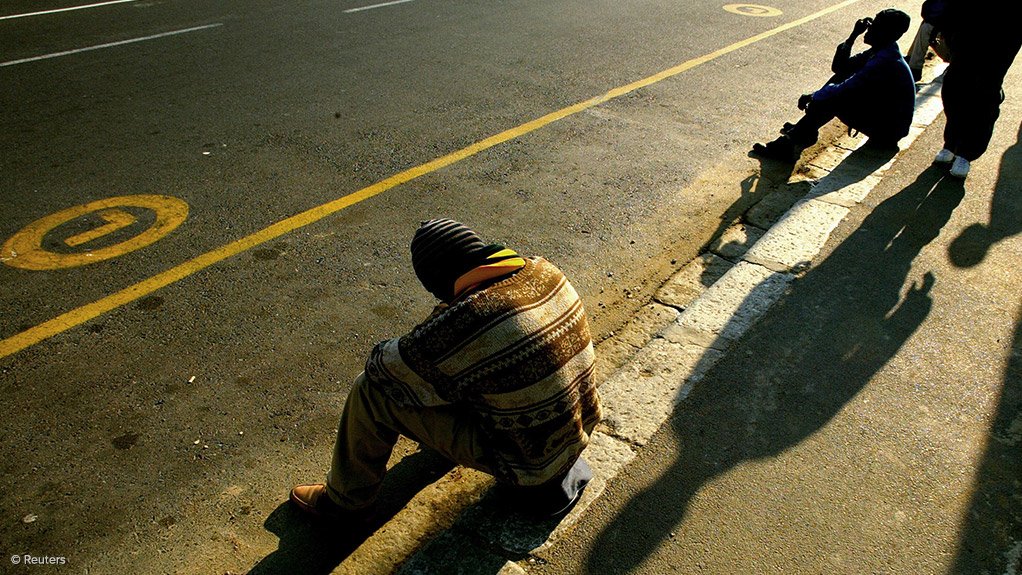The unemployment rate declined to 26.7% in the fourth quarter of 2017, according to the quarterly labour force survey released by Statistics South Africa (Stats SA) on Tuesday.
This comprises 5.9-million people, based on the official definition of unemployment which includes those who are not employed but actively looking for jobs.
However, this is 12.7 percentage points away from the 14% targeted in the National Development Plan (NDP) for 2020, according to statistician general Risenga Maluleke, who delivered the results in Pretoria. The NDP target for 2030 is 6%.
This is 1 percentage point down from the unemployment rate of 27.7% recorded for the second and third quarters of 2017.
Based on the expanded definition of unemployment - those aged between 15 and 64, who are not employed and are available for work - a total of 9.2-million people were unemployed, amounting to 36.3%.
There was a net decrease of 21 000 to 16.2-million in the number of those employed. Unemployment decreased by 330 000.
The absorption rate - which measures the proportion of the working age (15-64) population currently employed - was 43.1%; the 2030 target is 61%. The labour force participation rate, which measures the working age population actively engaged in labour by being employed or available to work, was 58.8%; the 2030 target is 65%.
Formal sector employment for the quarter declined by 135 000, and informal sector employment increased by 119 000 compared to the previous quarter.
The unemployment rate of women (29%) remains higher than that of men (24.8%). Women are also less likely to participate in the labour market, according to the report. Black women remain the most vulnerable, with an unemployment rate over 30%.
Stats SA also showed that unemployment is higher for those with lower education levels. The unemployment rate for those with less than matric is 31.2%, compared to graduates which is at 6.6%.
“You see education playing a critical role in labour markets,” said Maluleke.
Of the 10.3-million people in the age category between 15 and 24 years of age, 29.7% were not in employment, education or training. “Young people aged 15-24 remain vulnerable in the labour market with the unemployment rate of over 52% and absorption rate of almost 13%,” according to the report.
The unemployment rate of those aged between 25 and 34 (33.4%) is double that of 45- to 54-year-olds (15.6%).
“The absorption rate for people aged 25-34 years old is over 13 percentage points lower than that of people aged 45-54 years old,” the report read.
Drop in finance industry
Services, trade and finance remain the main contributors to employment and GDP for the quarter.
However, employment in the finance industry decreased by 91 000 for the quarter. There were also declines in the mining industry (35 000), trade (45 000) and private households (43 000).
There were gains in the social services industry (75 000), manufacturing (42 000), agriculture (39 000) and construction (26 000).
EMAIL THIS ARTICLE SAVE THIS ARTICLE
To subscribe email subscriptions@creamermedia.co.za or click here
To advertise email advertising@creamermedia.co.za or click here











